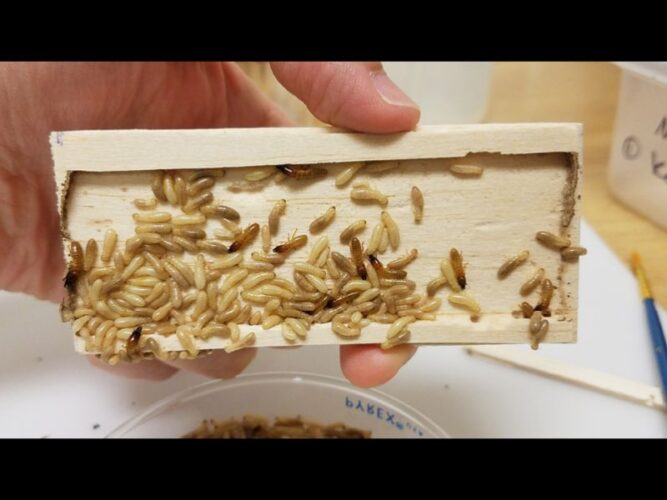How to Control Drywood Termites? Drywood termites are a type of termite that can infest dry wood, such as furniture, structural timbers, picture frames, and banisters. Unlike subterranean termites, they do not need contact with soil or moisture to survive. They can cause significant damage to wooden structures by tunneling through the wood and leaving behind fecal pellets.
Drywood termites are mainly found in the southern coastal regions of the U.S., especially in California, Arizona, Texas, Louisiana, and Florida. There are three common species of drywood termites: desert drywood termite, southeastern drywood termite and western drywood termite.
They can be identified by their color, size, wings, and antennae.
Signs of Drywood Termite Infestation
Some signs that indicate you may have a drywood termite infestation are:
- Piles of fecal pellets around the infested wood. These pellets are hexagonal in shape and vary in color depending on the wood they feed on. They are pushed out of small holes called “kick-out” holes by termites.
- Shed wings near windowsills, doors, or vents. These wings belong to the reproductive termites or alates that swarm out of the colony to mate and start new colonies.
- Blisters or cracks on wood surfaces that contain the termite galleries. These galleries run across the grain of wood and have a smooth appearance.
- Hollow or weak-sounding wood when tapped or probed.
How to Control Drywood Termites?
There are two main methods to control drywood termites: localized treatments and whole-structure treatments.
Localized treatments target specific areas of infestation and can be done by homeowners or professionals. Some examples of localized treatments are:
Wood injections: This involves injecting insecticides into the termite galleries through small holes drilled in the wood.
Heat treatment: This involves raising the temperature of the infested wood to a level that kills the termites and their eggs.
Cold treatment: This involves lowering the temperature of the infested wood to a level that kills the termites and their eggs.
Microwave treatment: This involves exposing the infested wood to microwaves that penetrate the wood and kill the termites.
Borate treatment: This involves applying a borate solution to the surface of the wood or injecting it into the galleries. Borates are toxic to termites but harmless to humans and pets.
Professional help is required for “whole structure treatments,” which entail treating the entire building or structure. Whole-building approaches include, but are not limited to:
Fumigation: Termites and their eggs can be eradicated by covering the building in a tent and flooding it with poisonous gas.
Heat treatment: Termites and their eggs can be killed by heating the entire building to a high enough temperature.
Cold treatment: This involves lowering the temperature of the entire structure to a level that kills all the termites and their eggs.
How to Prevent Drywood Termites?
Some preventive measures that can help reduce the risk of drywood termite infestation are:
- Inspect your home regularly for signs of termite activity and damage.
- Seal any cracks or openings in your home that could allow termites to enter.
- Avoid storing firewood, lumber, or other wooden items near your home or in contact with the soil.
- Paint or seal exposed wood surfaces to prevent moisture loss and termite entry.
- Use treated wood or termite-resistant wood for construction or renovation projects.
- Hire a licensed pest control professional to perform periodic inspections and treatments if needed.
Drywood termites are a serious threat to wooden structures and furniture. By knowing how to identify, control and prevent them, you can protect your home from these destructive pests.

